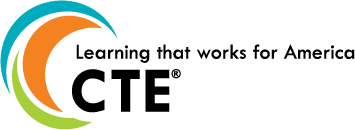The views, opinions, services, and products shared in this post are solely for educational purposes and do not imply agreement or endorsement by Advance CTE, nor discrimination against similar brands, products, or services not mentioned.
 As a State CTE leader, you’re responsible for ensuring that essential information is properly collected, stored, and communicated to relevant agencies. However, many educators find data management difficult and time-consuming.
As a State CTE leader, you’re responsible for ensuring that essential information is properly collected, stored, and communicated to relevant agencies. However, many educators find data management difficult and time-consuming.
Below, you’ll discover five of the most common problems associated with CTE data management.
When left unaddressed, these issues can become overwhelming. But with the right system in place, you can overcome these challenges and put CTE at the Forefront.
1. Manual Data Entry
Tracking data manually comes with a high chance of error. When you enter data by hand, you may end up double-checking your work and even entering the same data multiple times!
This inefficient process costs time and often leads to inaccurate reports.
2. Difficulty Managing Spreadsheet Data
Properly dealing with spreadsheet data is easier said than done. Using spreadsheets requires correctly setting up different fields and conditional formats. Without proper formatting, even the best-designed spreadsheet can become a confusing mess.
Importing and exporting data can lead to more issues, making data analysis difficult.
Finally, different team members may have separate documents, challenging your efforts to keep a clean data set.
3. Lack of Data Transparency and Insight
Especially when records are kept in various places, it’s common for CTE teams not to have an authoritative database to make critical decisions. Without data transparency, administrators are forced to fill in gaps or even resort to guesswork.
When you don’t have a full picture of what is going on in your CTE program, the insight you can gain from analyzing data is limited. Programs that lack confidence in their data risk falling behind in obtaining funding and complying with regulations.
4. Inability to Track Performance Across Multiple Schools
States with a large volume of CTE offerings often struggle with tracking performance across multiple schools. When each school measures data differently, it’s up to CTE directors to reconcile these differences.
Often, the solution that works best is a data management system that ensures every school is using the same measurements to quantify success.
5. Your Data Is Not Focused on CTE
Finally, many administrators use data management solutions engineered toward the traditional classroom experience that don’t show the complete picture of a CTE program.
But a CTE-specific solution can track completers, CTSOs, certifications, and more. This gives you a full picture of the value of a program to learners and communities.
The Importance of Quality CTE Data Management
In ensuring learners have an ideal CTE experience, quality data management makes all the difference. When you have an effective system in place, state and local CTE leaders will be able to use program data to make key program decisions benefiting everyone, expanding program offerings and providing certification opportunities that will open doors for learners in the future.
Solve Your CTE Data Management Problems
Each of these data-related complications can challenge CTE directors and administrators and leave with only part of the story. But when you adopt a CTE-specific data management solution like Eduthings, you can track and report on program performance and put CTE at the Forefront.

Visit the iCEV booth during the Advance CTE Spring Conference to learn how Eduthings can be your CTE command center and improve your data management with a custom solution.


 I completed my undergraduate degree in political science from the University of Nevada, Las Vegas and participated in a public policy minor program in collaboration with the Washington, DC-based Brookings Institution. Through the program, I worked on policy advocacy and research relevant to the Mountain West region at my university’s think-tank, specifically in education policy. After interning at the Brown Center on Education Policy, I was confident that educational research and its impact on learner outcomes was the space I wanted to be in for years to come.
I completed my undergraduate degree in political science from the University of Nevada, Las Vegas and participated in a public policy minor program in collaboration with the Washington, DC-based Brookings Institution. Through the program, I worked on policy advocacy and research relevant to the Mountain West region at my university’s think-tank, specifically in education policy. After interning at the Brown Center on Education Policy, I was confident that educational research and its impact on learner outcomes was the space I wanted to be in for years to come. 



 Dr. Crystal Gardner currently serves as the Instructional Supervisor for the Houston Community College (HCC) Alternative Teacher Certification Program (ATCP). In this role, she oversees instructional operations, program development, quality control, and compliance management. Joining the Fellowship was an exciting opportunity to fully immerse herself in the world of career and technical education (CTE) through equity-aligned learning and real-world practicum.
Dr. Crystal Gardner currently serves as the Instructional Supervisor for the Houston Community College (HCC) Alternative Teacher Certification Program (ATCP). In this role, she oversees instructional operations, program development, quality control, and compliance management. Joining the Fellowship was an exciting opportunity to fully immerse herself in the world of career and technical education (CTE) through equity-aligned learning and real-world practicum. “As a lifelong learner, I’ve always been intentional in my pursuit of professional development and growth in my career.”
“As a lifelong learner, I’ve always been intentional in my pursuit of professional development and growth in my career.” Tell us about your journey to the Fellowship.
Tell us about your journey to the Fellowship. Earlier this year, the U.S. Chamber of Commerce Foundation hosted a webinar to release their new report,
Earlier this year, the U.S. Chamber of Commerce Foundation hosted a webinar to release their new report,  Project Focus
Project Focus